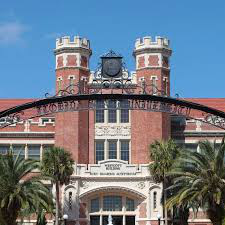Speaker
Description
We study the $\Omega(2012)$ which was measured in the Belle experiment. We conduct a study of the interaction of the $\bar K \Xi^*$, $\eta \Omega$($s$-wave) and $\bar K \Xi$($d$-wave) channels within a coupled channel unitary approach. We also present a mechanism for $\Omega_c \to \pi^+ \Omega(2012)$ production through an external emission Cabibbo favored weak decay mode, where the $\Omega(2012)$ is dynamically generated from the above interaction. The picture has as a consequence that one can evaluate the direct decay $\Omega_c^0 \to \pi^+K^- \Xi^0$ and the decay $\Omega_c^0 \to \pi^+\bar{K} \Xi^*$, $\pi^+\eta\Omega$ with direct coupling of $\bar{K}\Xi^*$ and $\eta\Omega$ to $K^- \Xi^0$. We find that all data including the Belle experiment on $\Gamma_{\Omega^* \to \pi \bar K \Xi}/ \Gamma_{\Omega^* \to \bar K \Xi}$, are compatible with the molecular picture stemming from meson baryon interaction of these channels. I will give a presentation based on Refs. [1]-[3].
[1] R. Pavao and E. Oset, Eur. Phys. J. C78, 857 (2018).
[2] N. Ikeno, G. Toledo, and E. Oset, Phys. Rev. D 101, 094016 (2020).
[3] N. Ikeno, W. H. Liang, G. Toledo, and E. Oset, arXiv:2204.13396 [hep-ph] (2022).
| speaker affiliation | Tottori University |
|---|

